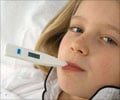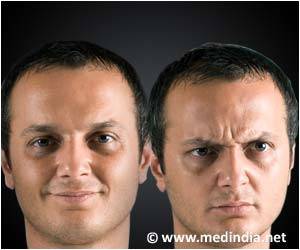A neurosurgeon has reported his promising results about a three-stage brain surgery, performed on 25 children with tuberous sclerosis, a genetic disorder characterised by intractable seizures.
A neurosurgeon has reported his promising results about a three-stage brain surgery, performed on 25 children with tuberous sclerosis, a genetic disorder characterised by intractable seizures.
Sadly, none of the treatments for epilepsy—anti-seizure medications, a procedure called vagus nerve stimulation, a special diet —could quell the electrical storms in the young boy’s brain. Caused by a rare genetic disease called tuberous sclerosis, the seizures began when he was only 2 months old. By the time he was 5, he was having more than 10 a day. The seizures left him with the developmental capabilities of a 1-year-old child.Today the boy rarely experiences seizures and his development has improved dramatically thanks to a bold three-stage brain operation being performed at NYU Medical Center by pediatric neurosurgeon Howard Weiner, M.D., Associate Professor of Neurosurgery and Pediatrics at New York University School of Medicine.
This child’s case study is part of a report in the May issue of the journal Pediatrics that describes 25 children with tuberous sclerosis who have been operated on by Dr. Weiner over the last six years. It is the largest report of epilepsy surgery in young children with the disease by a single surgeon in the medical literature.
The youngest child was 7 months old, and the oldest 17. They initially were evaluated extensively by a team of physicians that included Dr. Weiner and Orrin Devinsky, M.D., Professor of Neurology, Neurosurgery, and Psychiatry and Director of NYU’s Comprehensive Epilepsy Center. The evaluation included an overnight stay in a special inpatient pediatric epilepsy unit at NYU’s Tisch Hospital, equipped with 24-hour electroencephalography (EEG) and video monitoring to correlate the children’s behavior with unusual brain activity.
After the evaluation revealed that seizures were affecting many areas of their brains, the team determined that the multi-stage operation would be necessary. Nearly all of the children underwent three separate brain operations over a 2-1/2 week period. Some of the operations lasted as long as nine hours. During the entire period the children remained in Tisch Hospital, where their parents could sleep next to them.
Two or more years after the operations, 17 of the 25 children were free of seizures or had only mild non-disabling attacks. Six children still experienced more severe non-disabling seizures but the number of such seizures was reduced by more than 90 percent. In two children the number was reduced by 50 percent to 90 percent. Despite the risks of brain surgery, Dr. Weiner and his colleagues report that the multiple surgeries did not cause serious infections or permanent damage to the brain.
Advertisement
Tuberous sclerosis produces tubers on many organs in the body, including the skin, kidneys, lungs, and eyes. In the brain, the hard calcified growths cause seizures. Mental retardation, autism, and other developmental problems can occur in as many as two-thirds of individuals with the disease, according to the National Institute of Neurological Disorders and Stroke. Children with tuberous sclerosis typically have more than two tubers but some may have up to 20 in their brain, says Dr. Weiner.
Advertisement
To overcome this problem, neurosurgeons place electrodes directly on the brain itself, which requires removing a portion of the bony cranium and cutting through the dura mater, the tough fibrous tissue covering the brain. The implanted grid of electrodes, attached to an EEG machine, is used to continuously monitor seizure activity over several days, providing a map for the surgeon to the location where the seizures arise. In the second operation, the surgeon removes the seizure-causing tissue in the brain.
Dr. Weiner takes the operation one step further. He places another set of electrodes in the brain after the second operation in order to locate any other areas that may be causing seizures. So children are again monitored with a grid of electrodes over a period of days, and then undergo a third operation to remove any tissue that still may be causing seizures.
Despite the promising results so far, Dr. Weiner says that it hasn’t yet been demonstrated that there is a ‘direct correlation between freedom from seizures and developmental normalcy.’ However, he adds, ‘it is important to treat children as early as possible because persistent seizures are associated with a host of serious learning and developmental problems.’
Source: Eurekalert











